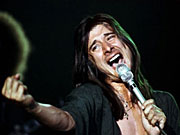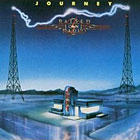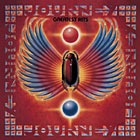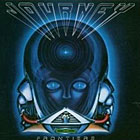Following on its heels, Next, Journey’s third album, was a mixture of the styles on the first two, albeit without quite as much of their raw power. It did, however, show the results of Vallory and Schon working on their vocal prowess, with Schon even stepping up to the mic to sing lead on several songs.![]()
 Journey: Phase two
Journey: Phase two
 By this time, the record label was impatient with Journey’s lackluster album sales, and pushed for the addition of a frontman/lead singer. A short lived stint by Robert Fleischman (who later recorded with heavy metal guitarist Vinnie Vincent) was followed by the addition of an unknown tenor out of central California: Steve Perry.
By this time, the record label was impatient with Journey’s lackluster album sales, and pushed for the addition of a frontman/lead singer. A short lived stint by Robert Fleischman (who later recorded with heavy metal guitarist Vinnie Vincent) was followed by the addition of an unknown tenor out of central California: Steve Perry.
The beginnings of this relationship were definitely stilted. “When we heard [Perry’s] demo, we thought, ‘Aw man, he’s a crooner,’ ” recounts Rolie in a later interview. “We wanted to rock.” On Perry’s side, he was afraid that the progressive, edgy guitar sound of the first three Journey albums had no place for the style of singing with which he felt comfortable.
Luckily for every one involved, manager Herbie Herbert stated in no uncertain terms that Perry was “the guy.” For better or worse, the band had to try to make it work. And make it work they did.
Schon leads the way
From the beginning, the union was an unqualified musical success. While Rolie had previously been the dominant songwriter, Schon and Perry now stepped into that position. As a guitarist and arranger, Schon transitioned into the new, pop-vocal format as if he had been born to the role.
His catchy, melodic guitar playing became, if anything, even more memorable. Streamlined by the vocal style of Perry and enhanced in the studio by producer Roy Thomas Baker (Queen, et al) Schon’s guitar become the perfect complement to Perry’s approachable vocal lines. The band’s fourth album, Inifinity, introduced a new Journey that took off like a shot, and just kept going.
Two hits, “Wheel in the Sky,” and “Lights,” brought the album to #21 on the Billboard chart. And “Lights,” in particular, a song about missing the beauty of San Francisco, became an iconic number for the band.
 Rise of a supergroup
Rise of a supergroup
After Infinity, drummer Dunbar was replaced with Steve Smith, who had gained notice playing with fusion violinist Jean Luc Ponty. The next two albums, Evolution and Departure, captured Billboard chart positions 20 and 8, respectively. This, in addition to Journey’s herculean touring schedule, had turned the band into a formidable force in the music world.
Rolie, burned out on life on the road, left the band. But before he did, he recommended ex-Babys keyboardist/vocalist Jonathan Cain. Throughout all these changes, the one constant that kept Journey cohesive was Schon’s guitar playing. His ability to create hooky guitar lines never seemed to run out of steam.
Click on image to buy album or CD from Amazon








